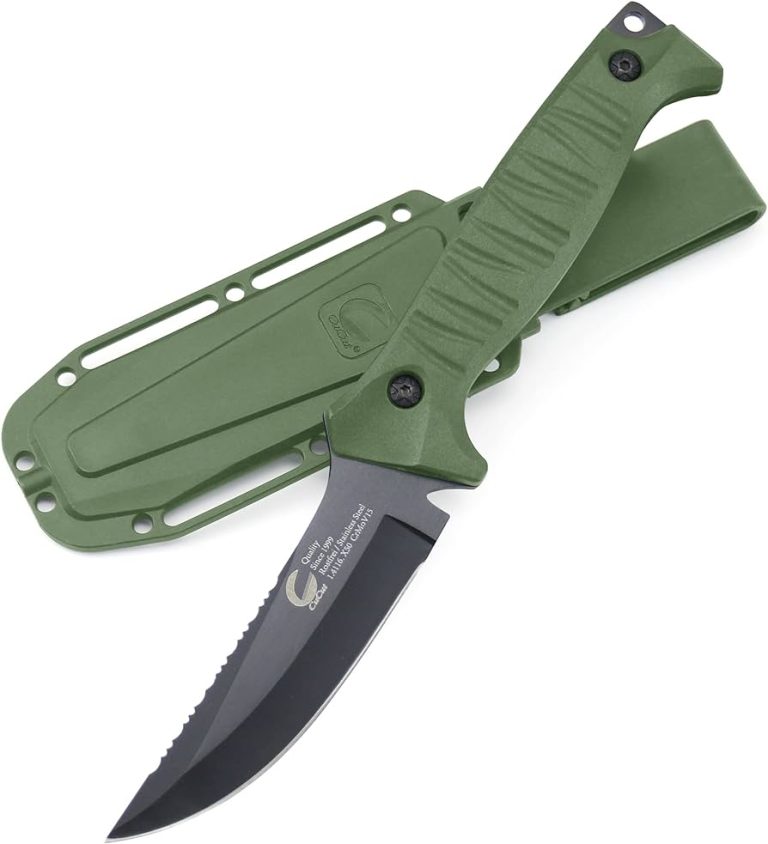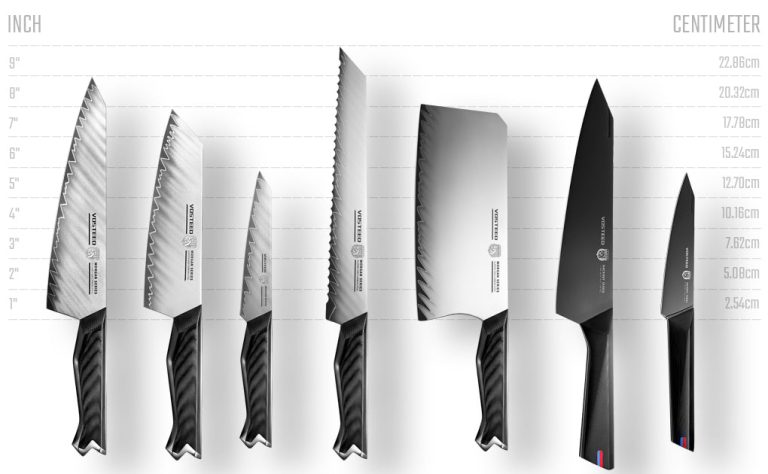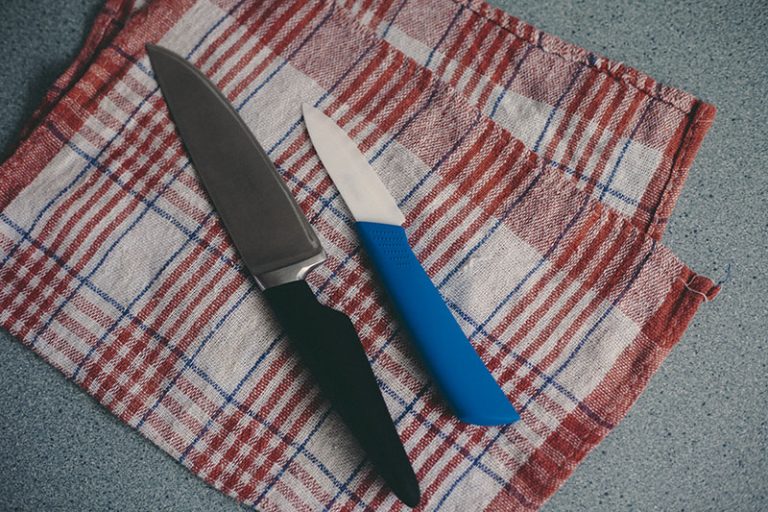Maintenance Tips for Fishing Knives
Maintaining fishing knives is crucial for their longevity and performance. Here are some essential tips.
Proper maintenance is essential for keeping fishing knives in top shape. Fishing knives are subjected to harsh conditions, including exposure to saltwater and fish scales, which can cause corrosion and dullness over time. To ensure your knife remains sharp and durable, it is important to clean and dry it thoroughly after use, preferably with fresh water and a mild detergent.
Additionally, regular sharpening, lubrication of the pivot points, and storing the knife in a dry environment will help prevent rust and prolong its lifespan. By following these maintenance tips, you can ensure that your fishing knife remains in optimal condition for many fishing trips to come.

Credit: www.onthewater.com
Importance Of Proper Maintenance
Maintenance Tips for Fishing Knives
Proper maintenance is vital to ensure the longevity and optimal performance of your fishing knives. One key aspect of proper maintenance is avoiding blade dullness. By keeping your blades sharp, you’ll enhance their cutting power and efficiency, making your fishing tasks much easier. Dull blades not only make your job more challenging but can also lead to safety hazards.
Avoid Blade Dullness
To avoid blade dullness, it’s essential to regularly sharpen your fishing knives. This can be done using a sharpening stone or a dedicated knife sharpener. Additionally, always clean and dry your knives after use to prevent corrosion and rust, as these can impact the sharpness of your blades. Storing your knives in a dry and secure place will also help maintain their sharpness and extend their lifespan.
Prolonged Lifespan
Proper maintenance not only prevents blade dullness but also significantly extends the lifespan of your fishing knives. Regularly inspect and oil the knife’s hinges and locks to prevent wear and tear. Use a cloth or a brush to remove any debris or dirt from the knife handle and sheath. By taking these measures, you’ll ensure that your fishing knives remain in optimal condition for many seasons to come.
Optimal Performance
A well-maintained fishing knife will always deliver optimal performance. With sharp and properly maintained blades, you can effortlessly handle various fishing tasks, such as cutting lines, scaling fish, or preparing bait. Ensure that your fishing knives are in top-notch condition by adhering to regular maintenance practices. This way, you’ll have a reliable tool ready to tackle any fishing adventure.
Cleaning Fishing Knives
When maintaining your fishing knives, it is important to start with proper cleaning. Gather essential supplies including a mild dish soap, a soft-bristle brush, and a clean, lint-free cloth. Begin by removing excess residue, such as fish scales or blood, by rinsing the knife under cold water and wiping it with a damp cloth. Then, soak the blade in warm, soapy water for a few minutes to loosen any stubborn dirt and debris. Use the soft brush to gently scrub away any remaining grime, paying attention to the handle and the crevices. Rinse the knife thoroughly and dry it with a clean cloth. Lastly, apply a thin coat of food-grade mineral oil to the blade and handle to prevent oxidation and corrosion. Regular maintenance will keep your fishing knives sharp and ready for your next outdoor adventure.
Sharpening Fishing Knives
Maintenance of fishing knives is essential to ensure their optimal performance. One crucial aspect of maintenance is sharpening the knives regularly. Choosing the right sharpening tool is the first step towards achieving a sharp blade. Various options are available, such as whetstones, diamond stones, or sharpening rods. Depending on your preference, you can select the tool that suits your needs best.
Once you have the right tool, proper angling is crucial for effective sharpening. Position the knife at the correct angle against the sharpening surface. This angle is typically between 20 to 30 degrees, but it may vary depending on the knife’s manufacturer. Consistency in knife strokes is also important to ensure even sharpening. Apply consistent pressure and maintain a steady motion while sharpening to achieve the desired results.
After sharpening, it is crucial to test the knife’s sharpness. Perform a quick sharpness test by gently running your finger along the blade’s edge. Be cautious as a well-sharpened knife is razor-sharp. If your knife effortlessly slices through paper or glides through the skin of a tomato without crushing it, then it is appropriately sharpened.
Storage And Protection
When it comes to keeping your fishing knives in top shape, proper storage and protection are crucial. Finding the right storage container is the first step towards preserving the quality of your knives. Using a knife sheath is recommended as it provides a secure and padded compartment to keep your knife safe from scratches and potential accidents. Additionally, it is essential to avoid contact with water and salt, as they can cause corrosion and rust. Regular inspections and maintenance checks should be conducted to ensure that your knives are in optimal condition. Regularly cleaning, oiling, and sharpening the blades will help extend their lifespan and ensure they perform at their best when you’re out on the water. By following these maintenance tips, you can ensure that your fishing knives remain durable and reliable for many fishing trips to come.
Bonus Tips And Tricks
Maintenance Tips for Fishing Knives:
Keep your fishing knives in optimal condition with these bonus tips and tricks.
Removing Rust Spots: To eliminate rust spots, apply a mixture of equal parts white vinegar and water to the affected area. Scrub gently with a soft brush or sponge until the rust is removed. Rinse thoroughly and dry completely. Applying a thin layer of oil afterwards can help prevent future rusting.
Removing Fish Odors: Fish odors can be stubborn, but a mixture of lemon juice and baking soda can help. Rub this mixture onto the knife blade, let it sit for a few minutes, and then rinse with cold water. Repeat if necessary. Alternatively, soaking the blade in a mixture of water and vinegar can also help eliminate odors.
Removing Stubborn Stains: For tough stains, create a paste using baking soda and water. Apply the paste to the stain and let it sit for approximately 10 minutes. Gently scrub the area with a soft cloth or sponge, then rinse thoroughly and dry.
Recommended Maintenance Schedule
Maintenance Tips for Fishing Knives
Daily Cleaning Routine: Properly cleaning your fishing knife after each use is essential for its longevity. Rinse the blade with freshwater and mild soap, removing any dirt, salt, or residue. Dry it thoroughly to prevent any water damage or rusting.
Weekly Sharpening Session: Keeping your fishing knife sharp ensures its optimal performance. Invest in a quality sharpening tool and follow the manufacturer’s instructions. Regular sharpening will help maintain a keen edge for effortless cuts during fishing trips.
Monthly Storage and Inspection Check: Once a month, inspect your fishing knife thoroughly. Check for any signs of wear, loose screws, or damage that may affect its functionality. Properly lubricate the hinge and store the knife in a cool, dry place to prevent rust and corrosion.
Conclusion
To keep your fishing knives in top shape, regular maintenance is crucial. By following a few simple tips, you can ensure the longevity and efficiency of your knives. Remember to rinse the blades with fresh water after each use to remove any salt or dirt.
Dry them thoroughly to prevent corrosion. Apply a thin coat of food-grade oil to protect the metal from rust. Sharpen the blades regularly using a whetstone or a knife sharpener to maintain their sharpness. Store your knives in a clean and dry place to prevent any damage or accidents.
With these maintenance practices, your fishing knives will be ready for any adventure on the water. Enjoy your fishing experiences with well-maintained knives that will make your tasks easier and more enjoyable. So don’t forget to keep your fishing knives in optimal condition with these simple maintenance tips.
Happy fishing!






